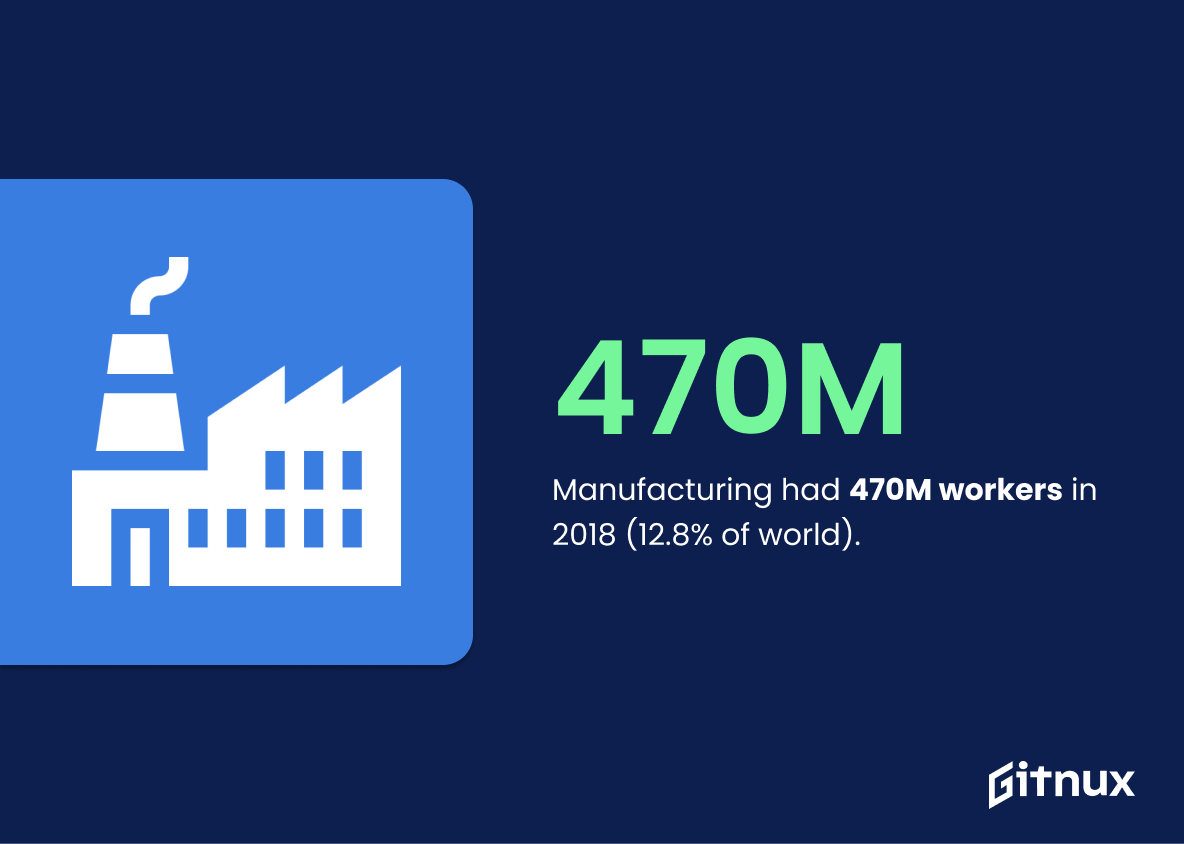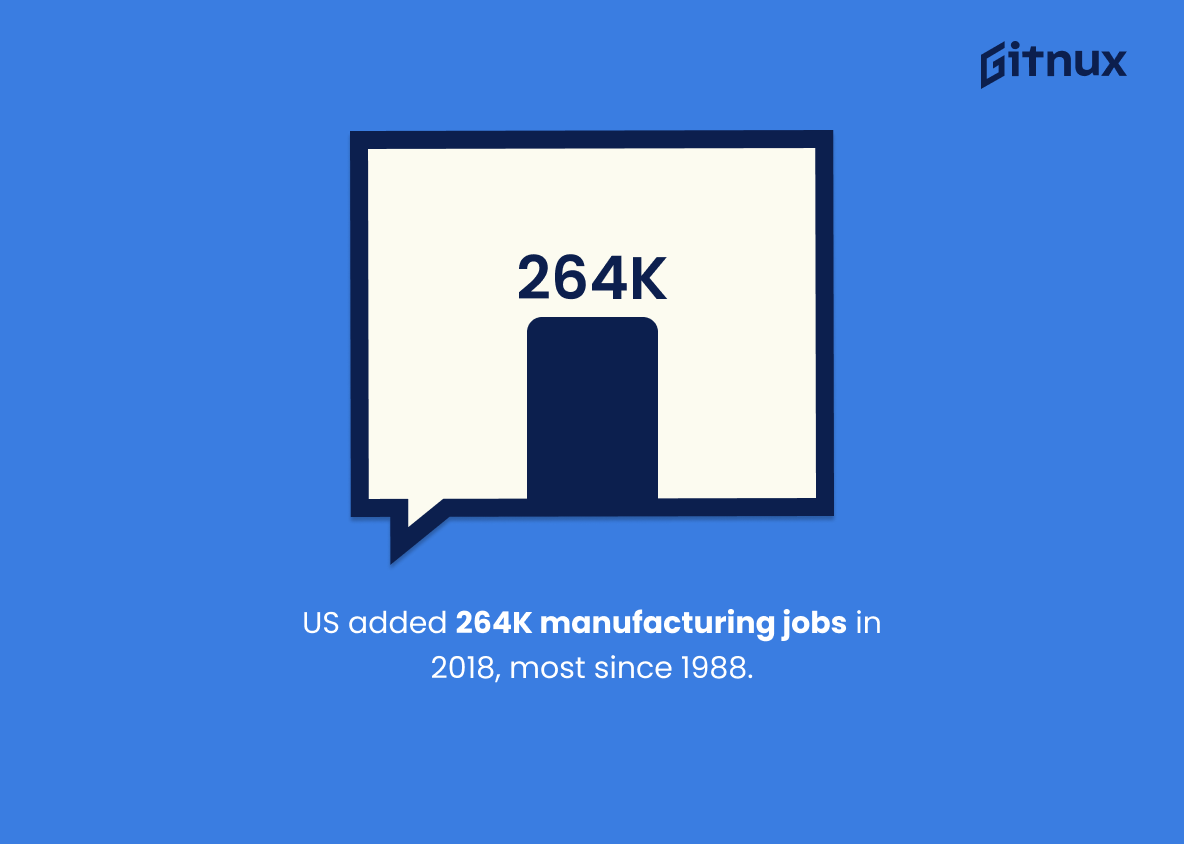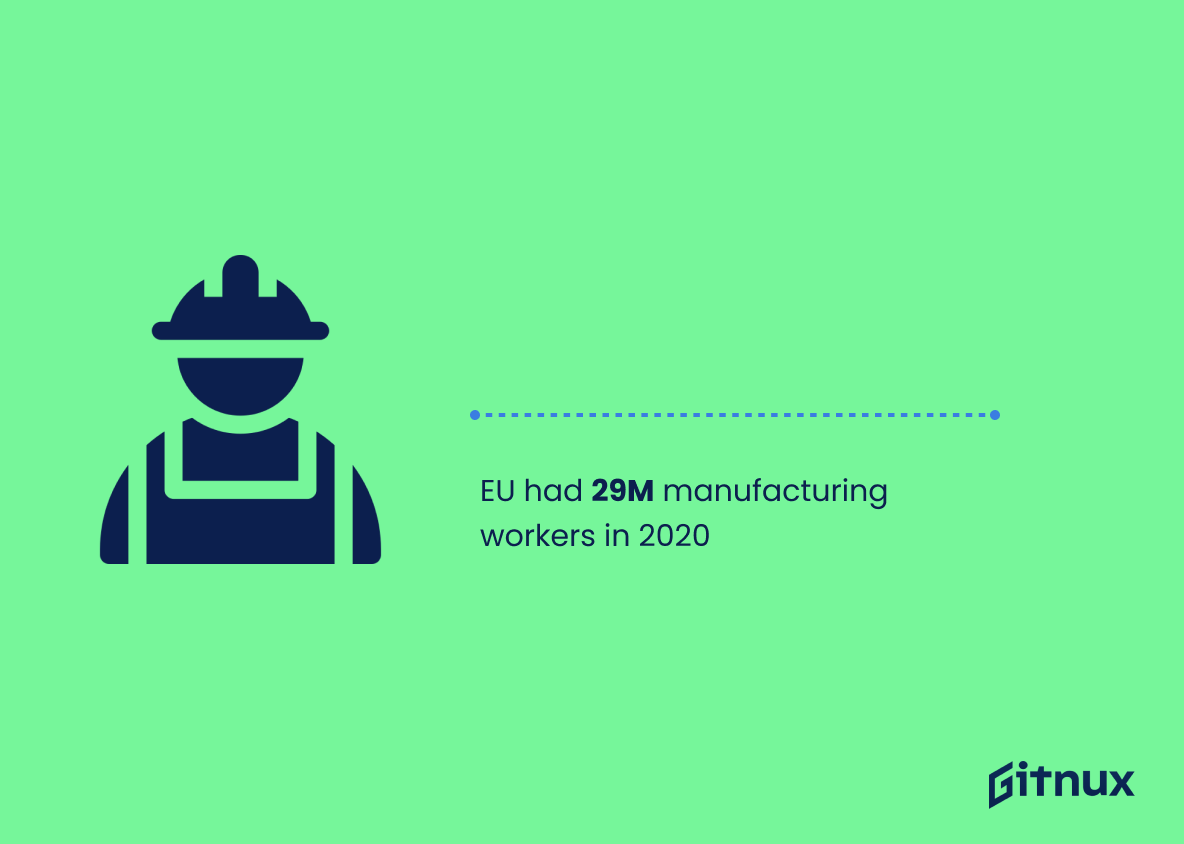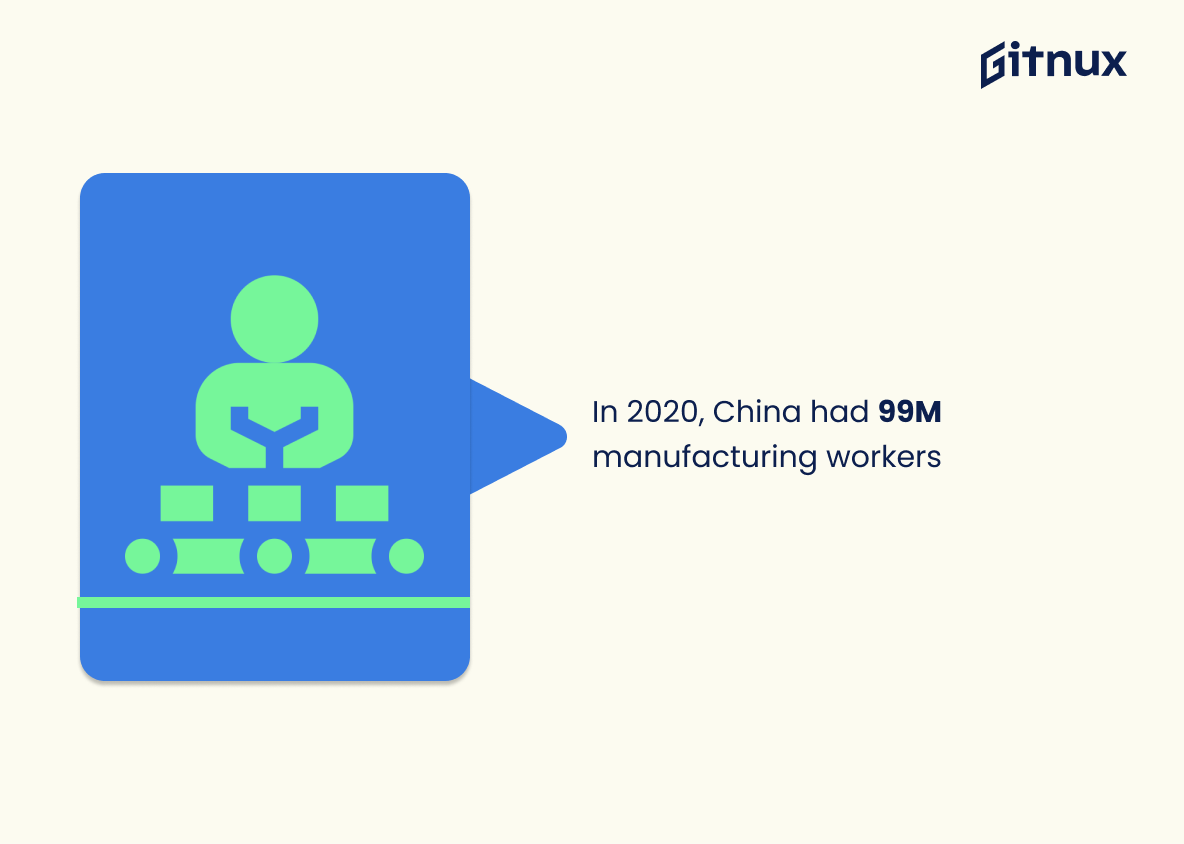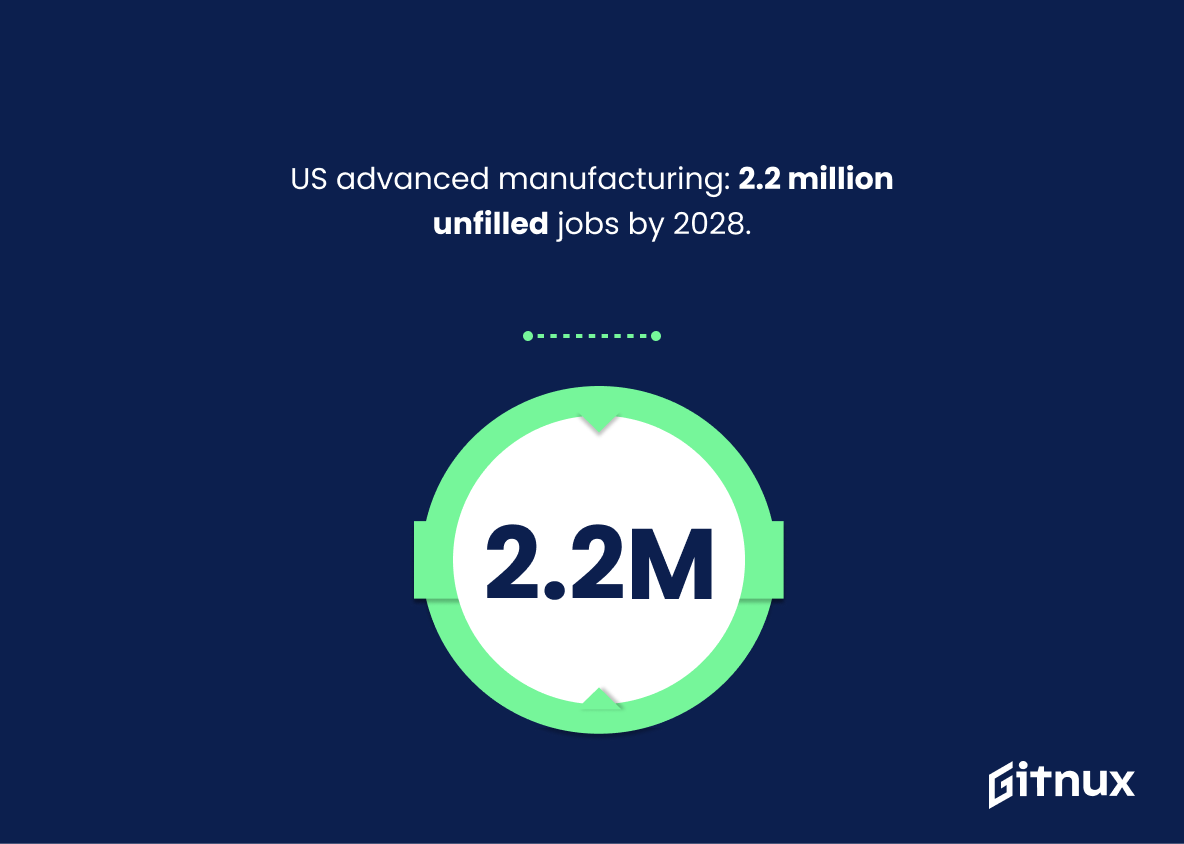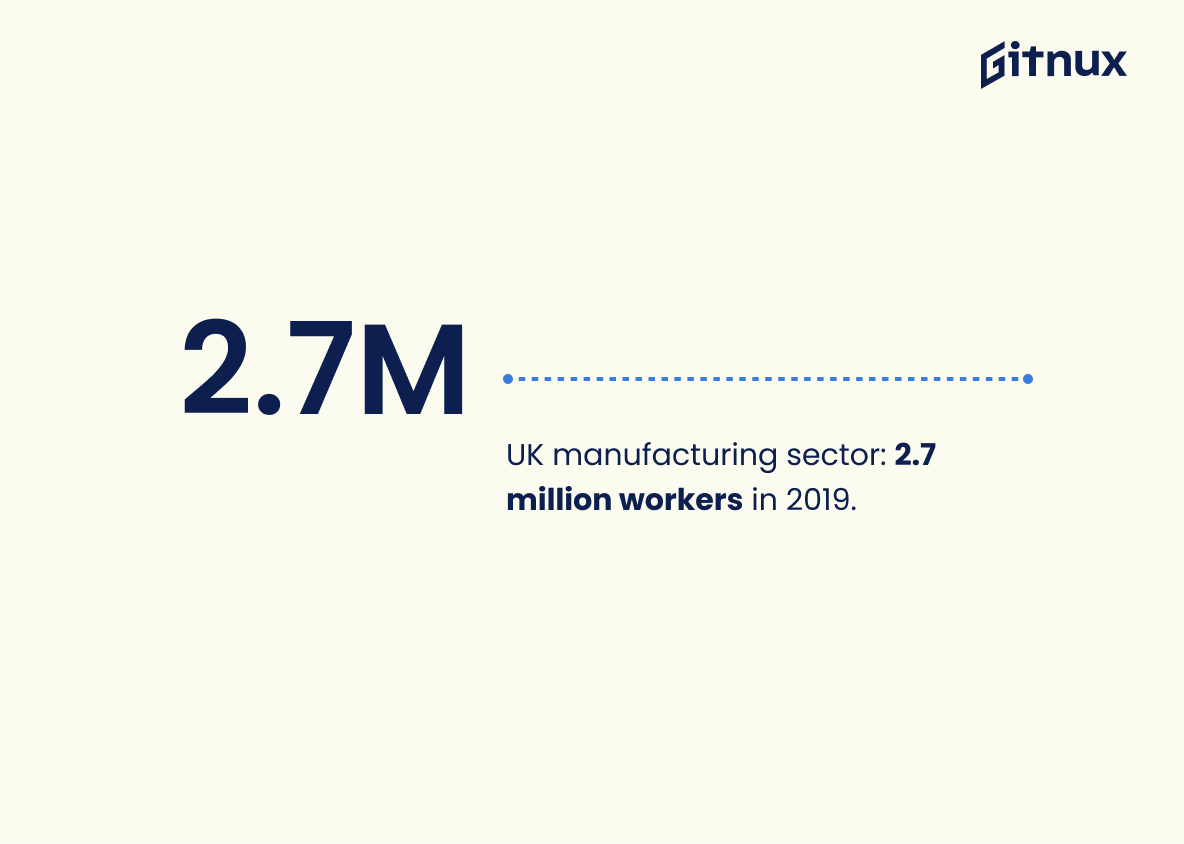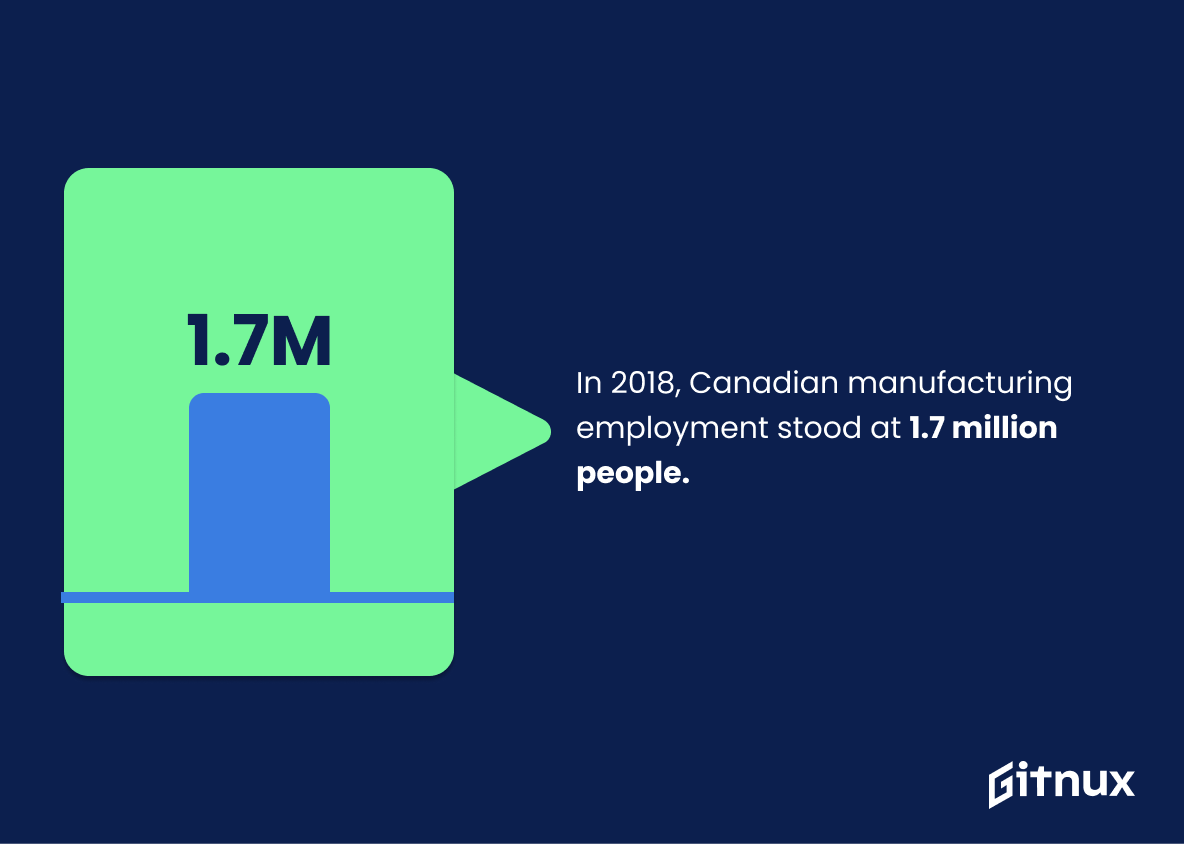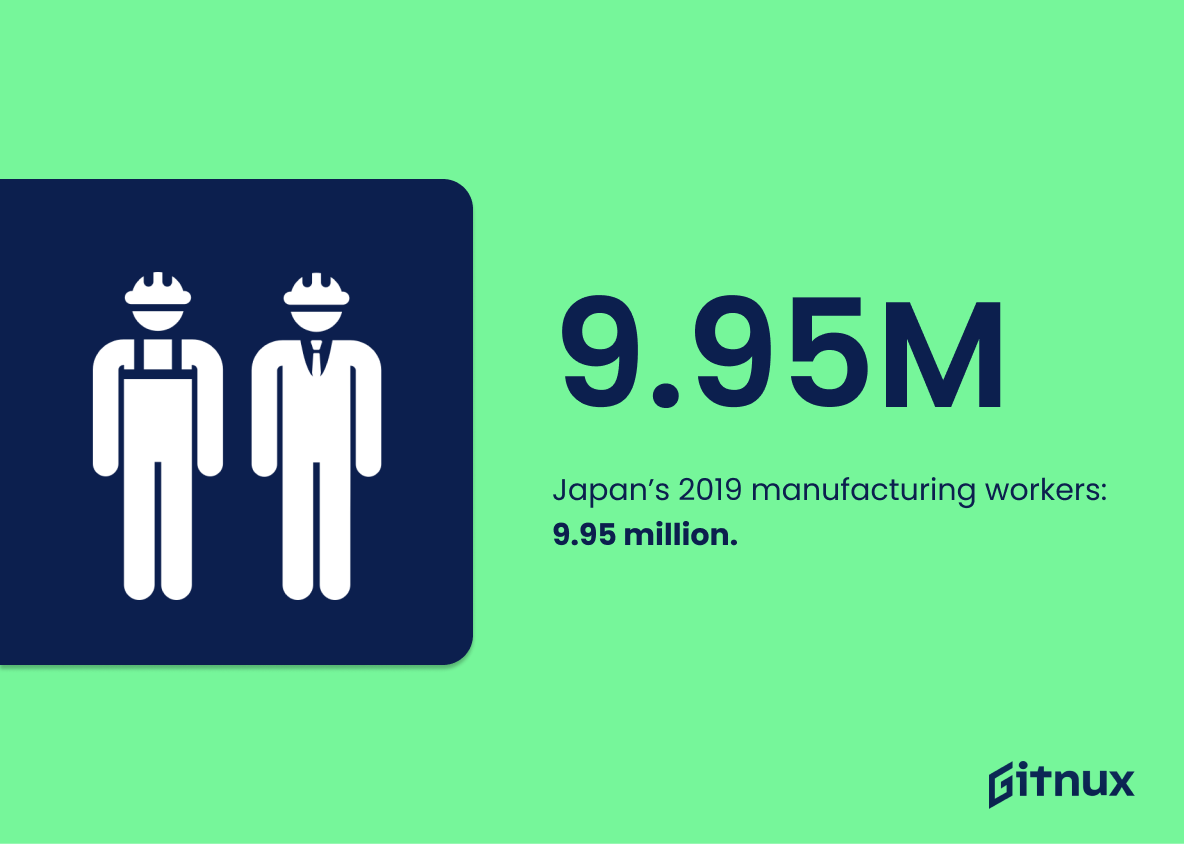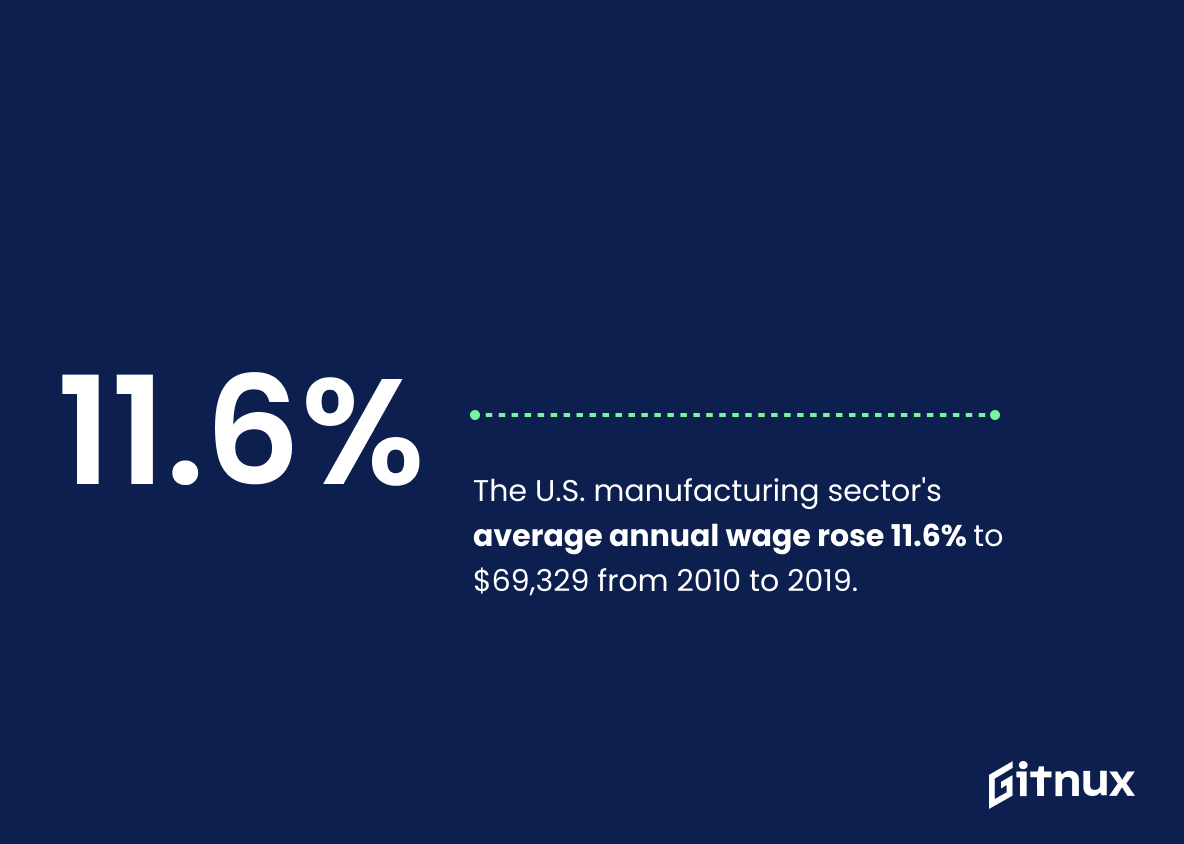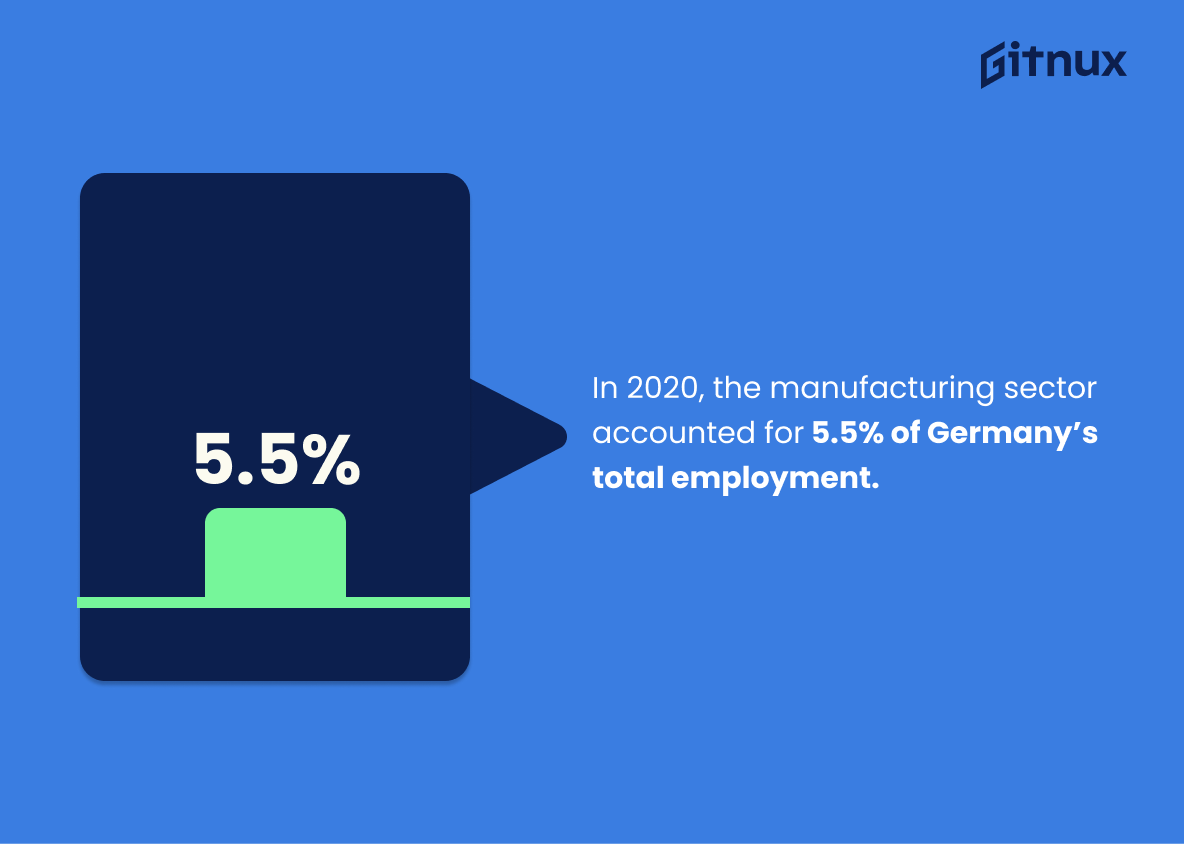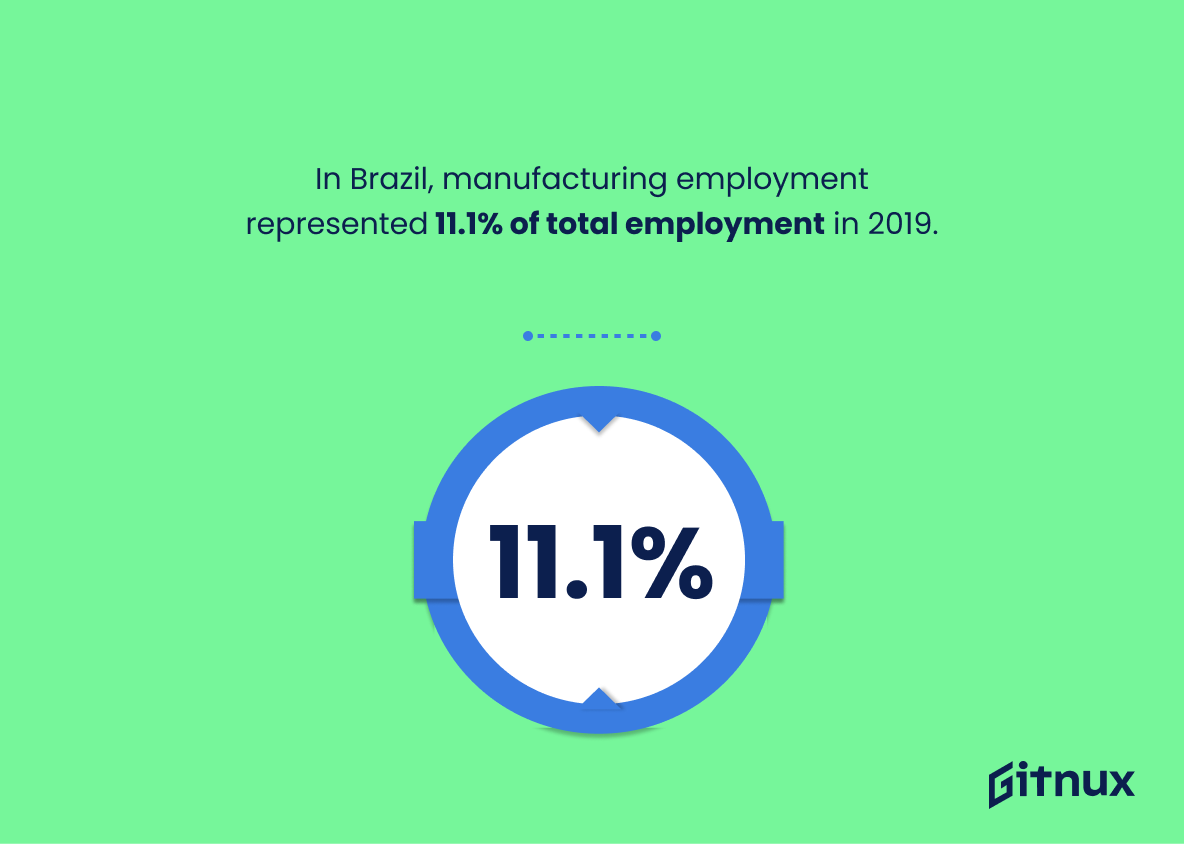Manufacturing is pivotal to the global economy, gaining emphasis as nations boost their manufacturing output. This post delves into key employment statistics in manufacturing from 2000-2021 across the US, EU, China, India, Mexico, Canada, Australia, Japan, and South Korea. Data shows varied trends: while US, EU, and China saw job declines, countries like India and Brazil experienced growth. We’ll also explore robotics in auto manufacturing globally and track average wage trends. This data showcases the diverse approaches to job creation in this sector. Now, let’s examine the crucial statistics about Manufacturing Employment.
Manufacturing Employment Statistics Overview
In 2018, global manufacturing employment was around 470 million, representing approximately 12.8% of the world’s total workforce.
The statistic on global manufacturing employment in 2018 is a telling indication of the importance of the manufacturing sector in the global economy. It demonstrates that manufacturing is a major source of employment, accounting for nearly 13% of the world’s total workforce. This statistic is especially relevant in a blog post about Manufacturing Employment Statistics, as it provides a snapshot of the current state of the industry and its impact on the global economy.
The United States added 264,000 manufacturing jobs in 2018, the highest number since 1988.
This statistic is a testament to the resurgence of the manufacturing industry in the United States. It shows that the industry is growing and creating jobs, which is a positive sign for the economy. It also indicates that the US is becoming more competitive in the global market, as more jobs are being created in the manufacturing sector. This is an encouraging sign for the future of the US economy and its ability to remain competitive in the global market.
In the European Union, there were approximately 29 million people employed in manufacturing in 2020.
The fact that 29 million people were employed in manufacturing in the European Union in 2020 is a testament to the importance of this sector in the region. It highlights the significance of manufacturing in the EU economy and the need for continued investment in this area to ensure its continued growth and success. This statistic is a reminder of the importance of manufacturing employment in the EU and the need to ensure that it remains a viable and prosperous sector.
As of 2020, China had approximately 99 million people employed in the manufacturing sector.
This statistic is a powerful indicator of the importance of the manufacturing sector in China. It demonstrates the sheer scale of the industry, and the number of people it employs. It is a testament to the strength of the Chinese economy, and the importance of the manufacturing sector to its success. It also serves as a reminder of the potential of the sector to create jobs and drive economic growth.
2.2 million jobs in advanced manufacturing are expected to go unfilled in the United States between 2018 and 2028.
This statistic is a stark reminder of the looming skills gap in the advanced manufacturing sector in the United States. With such a large number of jobs expected to go unfilled, it is clear that the industry is in need of more qualified workers to fill these positions. This could have a significant impact on the economy, as these jobs are essential for the growth and development of the manufacturing sector. It is therefore essential that steps are taken to ensure that the necessary skills are available to fill these positions, in order to ensure the continued success of the industry.
In 2010, the United States had an estimated 11,046,311 employees engaged in the manufacturing sector.
This statistic is a powerful indicator of the importance of the manufacturing sector in the United States. It shows that despite the economic downturn, the manufacturing sector still employs a significant number of people, making it a major contributor to the nation’s economy. This statistic is a reminder of the importance of the manufacturing sector and the need to ensure that it remains a viable and vibrant part of the US economy.
In 2019, 14.7% of Mexico’s employment was in the manufacturing sector.
This statistic is a telling indication of the importance of the manufacturing sector in Mexico’s economy. It demonstrates that a significant portion of the country’s workforce is employed in this sector, highlighting its importance to the nation’s economic stability and growth. Furthermore, it provides insight into the potential for further growth in the manufacturing sector, as well as the potential for job creation and economic development.
In 2019, the United Kingdom’s manufacturing sector employed over 2.7 million people.
This statistic is a powerful indicator of the importance of the manufacturing sector in the United Kingdom. It shows that the sector is a major employer, providing jobs for over 2.7 million people. This highlights the significance of the sector to the UK economy and its importance in providing employment opportunities for citizens.
In 2018, Canadian manufacturing employment stood at 1.7 million people.
This statistic is a powerful indicator of the importance of manufacturing employment in Canada. It shows that despite the changing economic landscape, manufacturing remains a major source of employment for Canadians. This statistic is a testament to the resilience of the manufacturing sector and its ability to provide jobs for Canadians.
In Australia, manufacturing employment reached approximately 860,000 jobs in 2020.
This statistic is a testament to the importance of manufacturing in Australia. It shows that despite the economic downturn caused by the pandemic, manufacturing employment has remained strong and continues to be a major contributor to the country’s economy. This is a positive sign for the future of manufacturing in Australia and provides hope for those looking for employment in the sector.
As of 2019, manufacturing employment in Japan stood at approximately 9.95 million people.
This statistic is a telling indication of the importance of manufacturing in Japan. It shows that despite the country’s technological advancements, the manufacturing sector remains a major source of employment for the Japanese population. This statistic is a testament to the strength of the Japanese manufacturing industry and its ability to provide jobs to millions of people.
In 2019, the United States manufacturing sector contributed 11.6% to the GDP.
This statistic is a powerful indicator of the importance of the manufacturing sector in the US economy. It shows that the manufacturing sector is a major contributor to the GDP, and thus is a major source of employment and economic growth. This highlights the importance of understanding the trends in manufacturing employment, as it can provide insight into the overall health of the US economy.
From 2010 to 2019, the average annual wage in the U.S. manufacturing sector increased by 11.6% to $69,329.
This statistic is a testament to the growth of the U.S. manufacturing sector over the past decade. It shows that the sector has seen a steady increase in wages, indicating that it is a viable and profitable industry. This is important information for anyone interested in the manufacturing sector, as it shows that it is a viable option for employment and can provide a good salary.
In 2020, the manufacturing sector accounted for 5.5% of Germany’s total employment.
This statistic is a telling indication of the importance of the manufacturing sector in Germany’s economy. It highlights the fact that the manufacturing sector is a major source of employment in the country, providing jobs to a significant portion of the population. This is especially relevant in the context of a blog post about Manufacturing Employment Statistics, as it provides a snapshot of the current state of the sector and its impact on the economy.
In Brazil, manufacturing employment represented 11.1% of total employment in 2019.
The statistic that manufacturing employment represented 11.1% of total employment in Brazil in 2019 is a telling indication of the importance of the manufacturing sector in the country. It highlights the significance of the industry in providing jobs and contributing to the economy. This statistic is especially relevant in the context of a blog post about Manufacturing Employment Statistics, as it provides a snapshot of the current state of the industry in Brazil.
As of 2020, the manufacturing sector in South Korea employed approximately 4.6 million people.
This statistic is a powerful indicator of the importance of the manufacturing sector in South Korea. It shows that the sector is a major employer, providing jobs to millions of people and contributing significantly to the country’s economy. It also highlights the need for continued investment in the sector to ensure that it remains a major source of employment and economic growth.
Conclusion
The data presented in this blog post paints a comprehensive picture of the state of manufacturing employment around the world. It is clear that, while there has been an overall decrease in manufacturing jobs in the United States since 2000, other countries have seen increases or stability over time. Additionally, robotics and automation are playing an increasingly important role within certain industries such as auto manufacturing. The U.S., European Union, China, India and many other nations all employ millions of people within their respective manufacturing sectors – demonstrating its importance to global economies today. Finally, it appears that advanced technology will continue to shape how we work going forward with 2 million expected job openings by 2028 due to increased demand for skilled workers who can operate these machines effectively and efficiently
References
0. – https://www.databank.worldbank.org
1. – https://www.statista.com
2. – https://www.indexmundi.com
3. – https://www.ons.gov.uk
4. – https://www.apps.bea.gov
5. – https://www.fred.stlouisfed.org
6. – https://www.50.statcan.gc.ca
7. – https://www.bls.gov
8. – https://www.ec.europa.eu
9. – https://www..deloitte.com
10. – https://www.brookings.edu
11. – https://www.data.worldbank.org
12. – https://www.destatis.de
13. – https://www.roboglobal.com
14. – https://www.cnbc.com
15. – https://www.abs.gov.au
